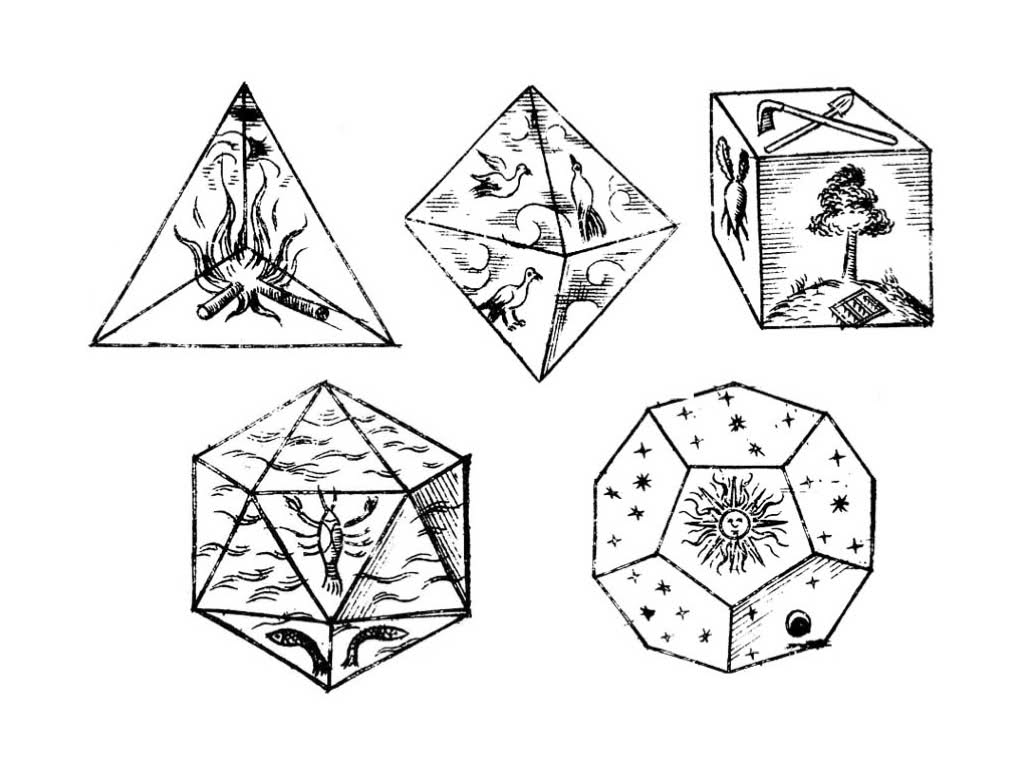Plato and Kepler
Platonic Solids are named after Plato ( 427 - 347 B.C. ) because he wrote about regular polyhedra in his book ‘Timaeus’ and it was the oldest account about regular polyhedra. Since I have been interested in Platonic Solids, I read the book ( well, in Japanese translation.. ) and vaguely noticed the sentences about polyhedra and elements in nature. On my way to find those paragraphs, I started to learn about Plato’s thought of the world and human beings.
About 1800 years later, Johannes Kepler ( 1571 - 1630 ) made drawings to describe Platonic Solids and natural elements;
Tetrahedron / fire
Octahedron / air
Cube / earth
Icosahedron / water
Dodecahedron / universe
He had a concept of the universe consisted by imaginary 5 regular polyhedra and inscribed spheres. He made models of the theory and had contemplated it for long time.
正多面体の5つが「プラトンの立体」と呼ばれるようになったのは、すでに知られていた5つの正多面体を初めて記録に残したのが哲学者のプラトンだったからと言われています。『ティマイオス』というその本の中で、正多面体は宇宙を構成する要素として説明されます。時間をかけてその箇所にたどり着くまでに、わたしはプラトンの世界観や人間社会への洞察に触れることになりました。
文章だけで説明したプラトンから約1,800年のちに、ヨハネス・ケプラーはプラトンの正多面体と対応する自然界の要素を図にして説明しました。
正4面体 / 火
正8面体 / 空気
立方体 / 地球
正20面体 / 水
正12面体 / 宇宙の容れ物
さらにケプラーは5つの正多面体と内接する球からなる見えない構造を持つのではないか?という着想から、数々の図や模型を作ってその説を検証しようと試みました。


